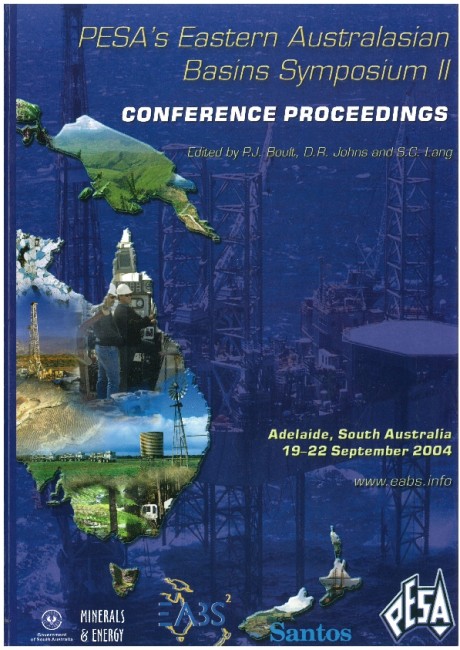Publication Name: PESA's Eastern Australasian Basin Symposium II
Authors: R.J. Willink, G.P. Pass, P. Horton, R. Taylor, G. Sutherland and B. Pidgeon
Date Published: December 2004
Number of Pages: 33
Reference Type: Book Section
Abstract:
In 1964, Union Oil Development Corporation drilled the exploration well Myall Creek-1 on the south plunge of a large structural reversal located on the western flank of the Taroom Trough in Queensland. The company elected to plug and abandon the well without testing sandstone reservoirs between 2070-2087 m KB, herein informally referred to as the Upper Tinowon Sands, and concluded that in this part of the basin fluvio-deltaic sandstones within the Upper Permian succession at large were of poor quality and not worth pursuing as a viable exploration target.Forty years later, it appears that this well may, in fact, have discovered one of the largest conventional gas fields, if not the largest, in the Surat Basin. A twin to Myall Creek-1, located 68 m from the original well location, and drilled underbalanced by Origin Energy Limited in 2003/2004 as Myall Creek-6, flowed gas from the Upper Tinowon Sands at a stabilised rate of 6.3 MMCFD. This and other exploration and appraisal wells nearby have also demonstrated that the gas pools in the Upper Tinowon Sands previously discovered by Oil Company of Australia Limited in Myall Creek-2 and by Mosaic Oil NL in Churchie-1 are part of the same stratigraphically trapped accumulation.
Excellent flow rates of gas have now been recorded from the Upper Tinowon Sands both by wells drilled conventionally with mud and by wells drilled underbalanced using liquid nitrogen. Intuitively, drilling these reservoirs underbalanced is expected to enhance deliverability. However, there is no unequivocal comparative test data available to date supporting this belief, nor any convincing petrographic evidence that indicates that these reservoirs would be subject to formation damage if drilled conventionally with mud.


